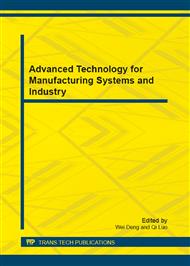p.593
p.597
p.603
p.611
p.617
p.622
p.627
p.632
p.636
Damage Identification of Simply Supported Beam Bridge Based on Time Series Analysis
Abstract:
Presently, the study on damage identification of bridges is very popular and it has a wide range of applications. Also the related theory and technology are constantly developing and mature. The researches based on the dynamic response of bridge in frequency domain is more, but the dynamics theory is complex and difficult for the engineering personnel to grasp. On the opposite, although the damage identification method based on the dynamic response of bridge in time domain is easy to understand, it is difficulty for applications. The Auto Regressive Moving Average model (ARMA) of time series analysis can be used to settle this problem. It is a not very abstruse theory and it is already apply for the system identification of some Structures. In this paper, we use time series analysis for the damage identification of simply supported beam bridge combined with its own dynamic response in time domain.
Info:
Periodical:
Pages:
617-621
Citation:
Online since:
November 2012
Authors:
Price:
Сopyright:
© 2012 Trans Tech Publications Ltd. All Rights Reserved
Share:
Citation:


